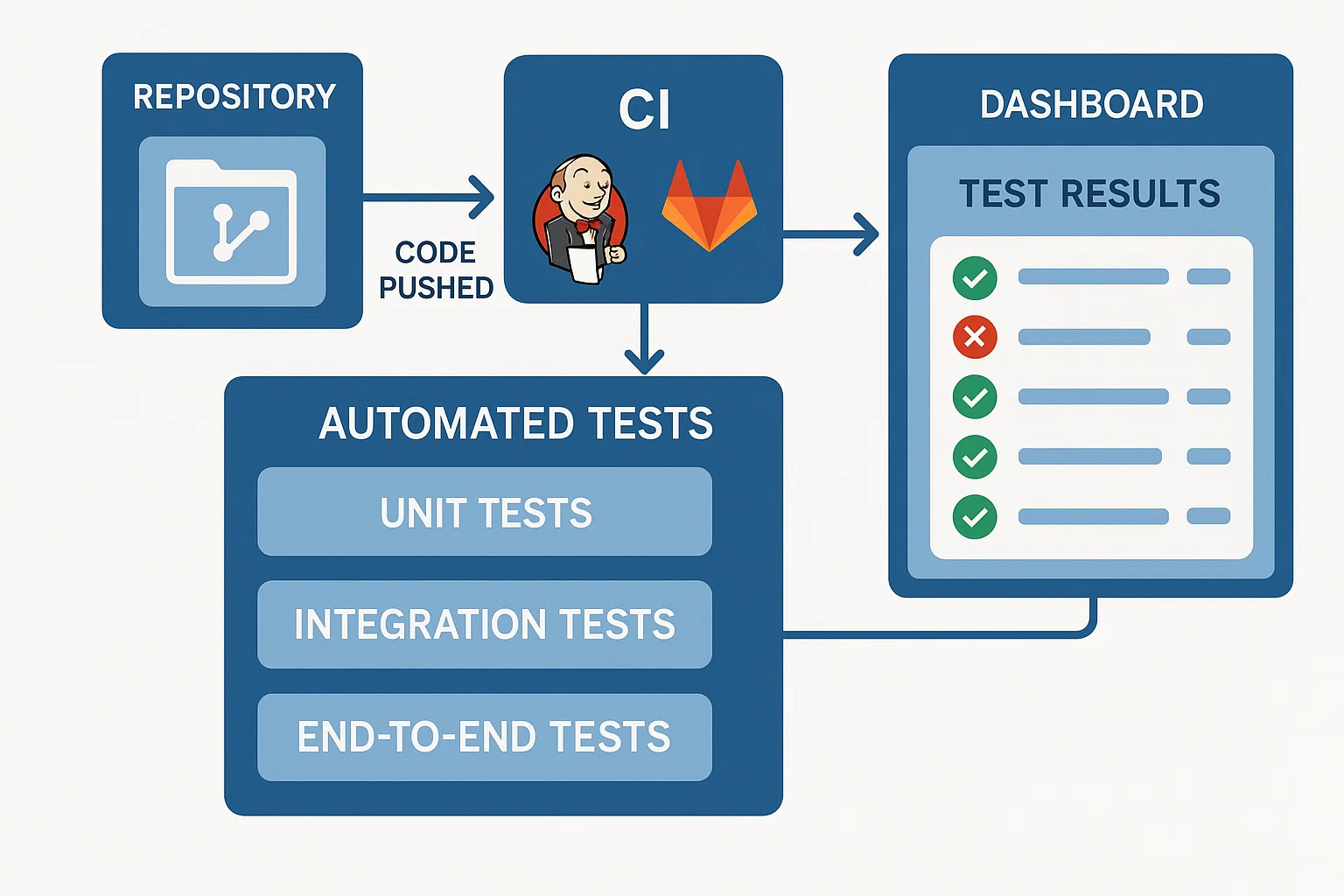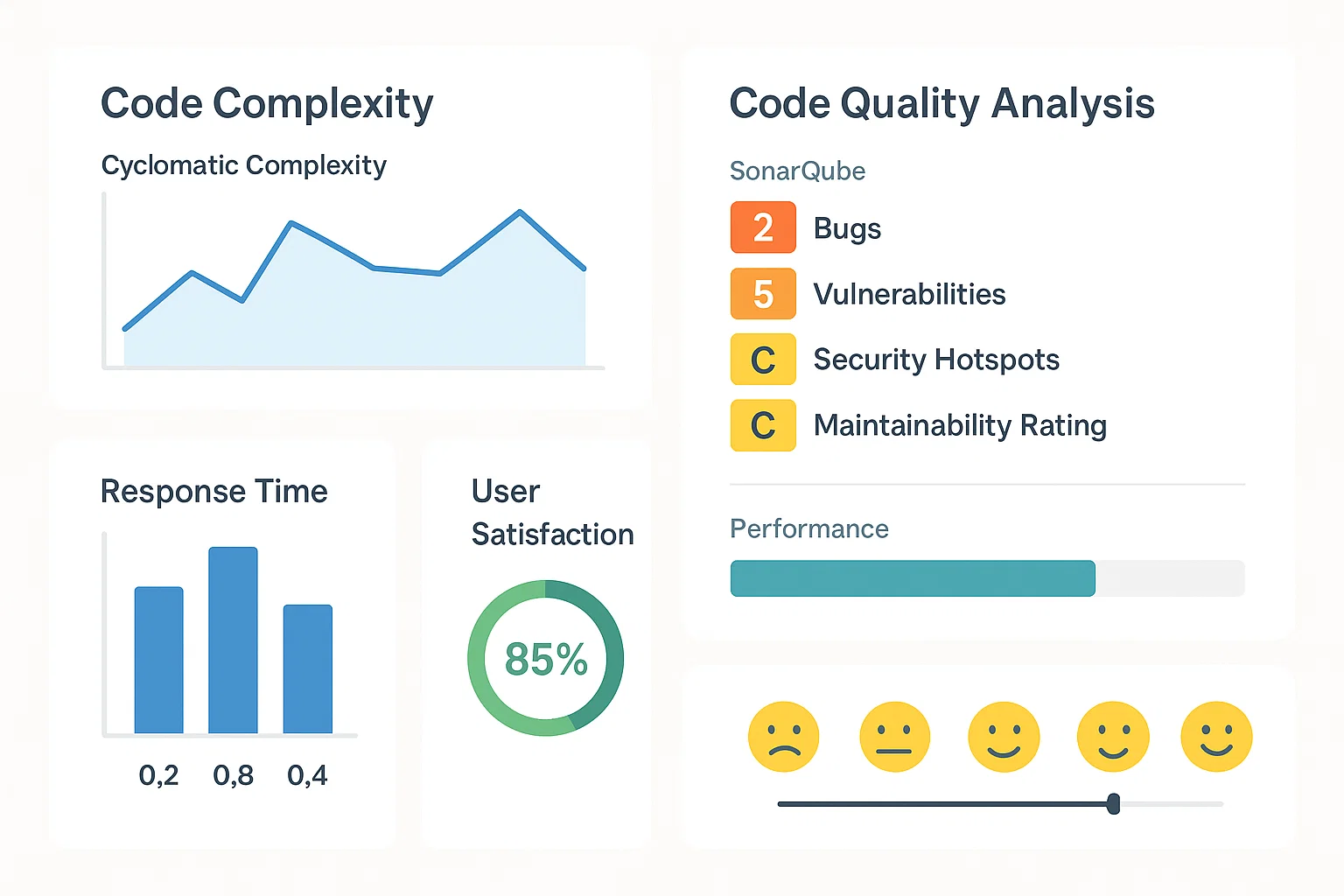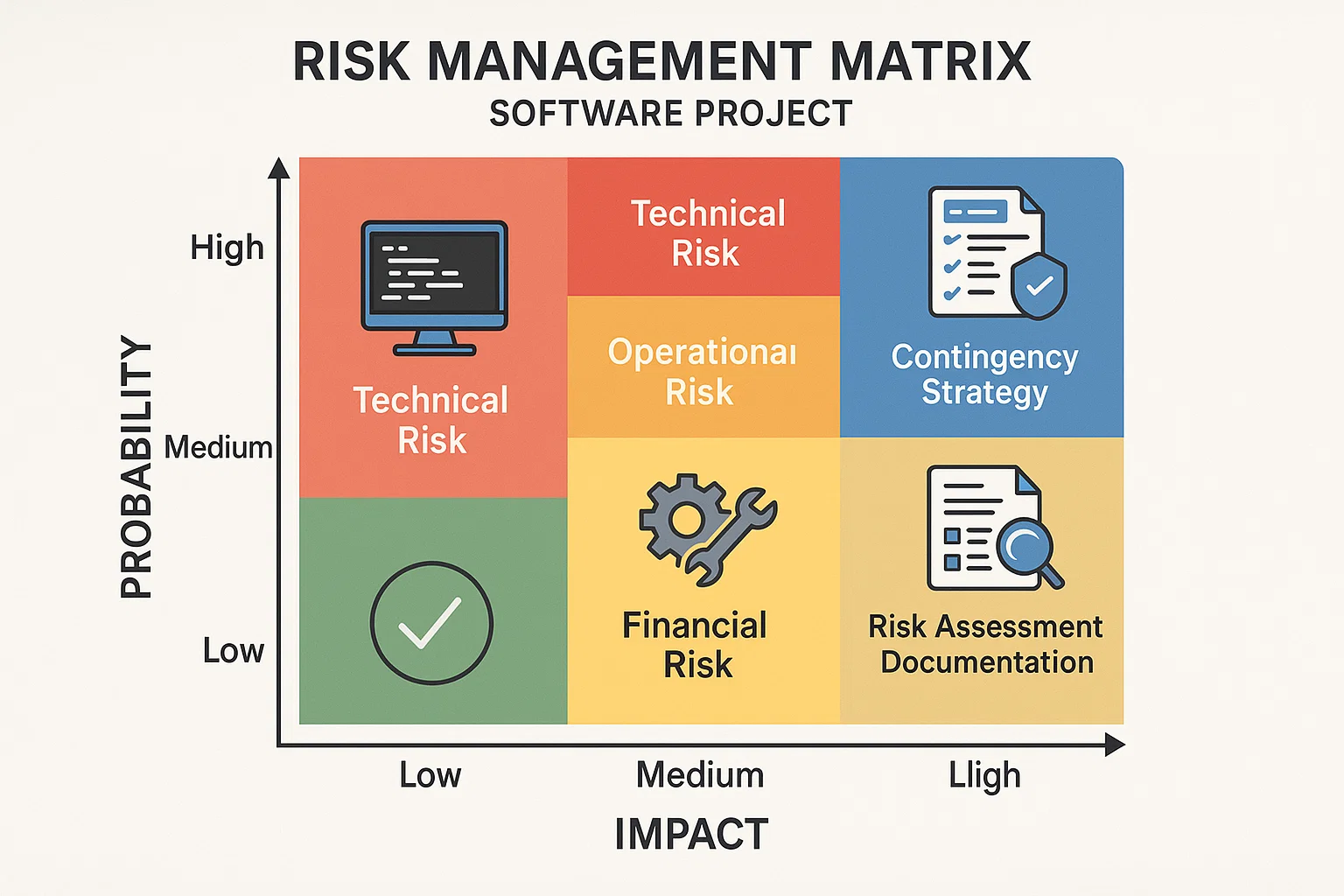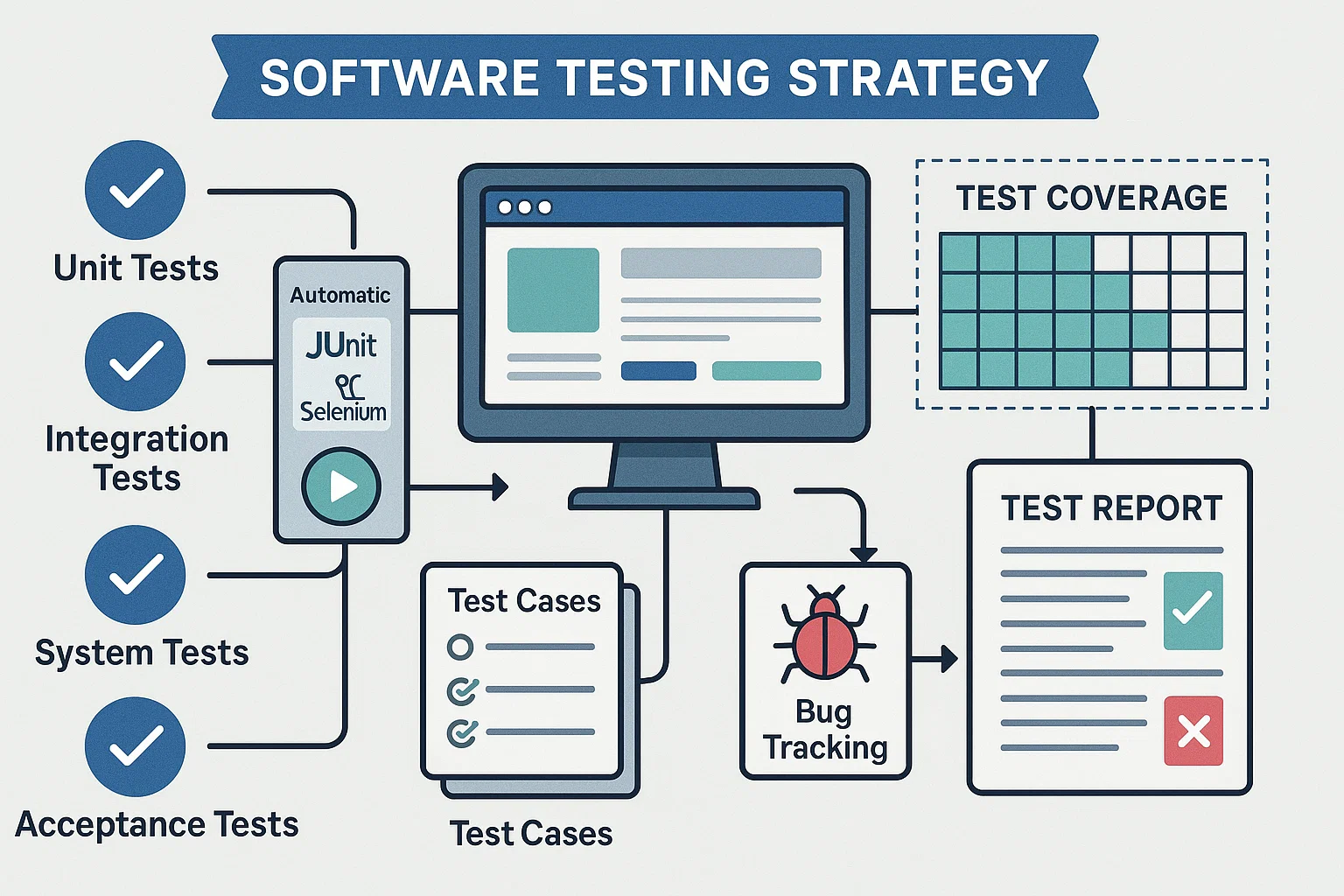Expert Assignment Solutions with 100% Guaranteed Success
Get Guaranteed success with our Top Notch Qualified Team ! Our Experts provide clear, step-by-step solutions and personalized tutoring to make sure you pass every course with good grades. We’re here for you 24/7, making sure you get desired results !
We Are The Most Trusted
Helping Students Ace Their Assignments & Exams with 100% Guaranteed Results
Featured Assignments

Automated Testing and Continuous Integration Implementation
Software Testing and CI/CDClient Requirements
The student needed to design and implement an automated testing pipeline for a software application, integrating it with a continuous integration (CI) system. The task required the student to write unit tests, integration tests, and end-to-end tests for a given application. They were also asked to configure a CI pipeline using tools like Jenkins, GitLab CI, or CircleCI to automate the testing process whenever code is pushed to a repository.
Challenges Faced
We ensured that students understood the importance of automated testing and CI, but many faced challenges in setting up the testing framework properly and integrating it with the CI system. Some students struggled with writing comprehensive tests that covered edge cases and ensuring the CI pipeline was triggered automatically with each code update. Others found it difficult to manage test failures and ensure meaningful feedback was provided to developers.
Our Solution
We provided a structured approach to implementing automated testing, including a guide on writing unit, integration, and system tests. We also walked the students through the process of setting up a CI/CD pipeline and integrating it with version control systems like Git. By using tools like Selenium for UI testing and PyTest for backend testing, we ensured they were able to set up a fully functional testing environment that automated the process of code validation.
Results Achieved
The students successfully implemented automated tests and integrated them with a CI pipeline. They were able to automate the testing of their application and ensure that any new changes were immediately tested in a real-world environment. Most students saw a significant improvement in the reliability and efficiency of their development process.
Client Review
My experience with this assignment was incredibly insightful. The hands-on approach of setting up automated tests and integrating them with a CI pipeline helped me understand the practical importance of automation in software quality. The step-by-step guidance allowed me to efficiently troubleshoot and overcome challenges, and now I feel confident in applying this knowledge to real projects.

Software Quality Metrics and Performance Evaluation
Software Performance and Quality EvaluationClient Requirements
The student needed to apply various software quality metrics to evaluate the performance and quality of an existing software application. This task required the student to collect data on aspects such as code complexity, test coverage, response time, and user satisfaction. They were also asked to analyze the results and propose improvements based on their findings.
Challenges Faced
We ensured that students understood the different quality metrics, but some faced difficulties in selecting the right metrics for different aspects of the software. Evaluating software performance using metrics like cyclomatic complexity and test coverage was challenging for some, as was interpreting the results and making recommendations for improvement. Additionally, students struggled to assess user satisfaction based on subjective feedback.
Our Solution
We guided students in selecting appropriate metrics for performance evaluation and explained how to collect and analyze the necessary data. Tools like SonarQube were used to evaluate code quality and complexity, while performance testing tools like JMeter helped measure response time. We also provided students with techniques to analyze user satisfaction, such as surveys or feedback collection, and demonstrated how to interpret these metrics to drive improvements.
Results Achieved
The students successfully analyzed the software’s performance and quality, using a variety of metrics to identify areas of improvement. They provided actionable insights and proposed changes based on their findings. Their reports demonstrated a thorough understanding of software quality and the importance of continuous performance monitoring.
Client Review
This assignment helped me realize how critical software quality metrics are in maintaining a high standard of development. By applying metrics like test coverage and cyclomatic complexity, I gained insights into areas that needed improvement. The guidance on performance evaluation and user satisfaction analysis allowed me to make informed recommendations for improving the software. It was a great learning experience.

Risk Management in Software Development
Risk Management in Software EngineeringClient Requirements
The student wanted to understand the principles of risk management in software engineering. The task required the student to identify potential risks in a software project (e.g., technical, operational, financial), assess their impact, and propose strategies for mitigation. Students were expected to use risk assessment techniques like Failure Mode and Effects Analysis (FMEA) or risk matrices to document and prioritize risks.
Challenges Faced
We ensured that students understood the theoretical aspects of risk management, but some struggled with identifying all the potential risks in a complex software project. Many students had difficulty categorizing and quantifying the risks, especially when it came to estimating the likelihood and impact of each risk. They also found it challenging to propose effective mitigation strategies and evaluate their effectiveness.
Our Solution
We provided students with examples of common risks in software projects and introduced them to risk management frameworks such as FMEA and risk matrices. Students were shown how to assess the likelihood and impact of each risk, as well as how to develop and implement mitigation strategies. We also covered how to monitor risks throughout the project lifecycle and adjust mitigation plans as necessary.
Results Achieved
The students successfully identified and categorized risks in a software project, applying risk management techniques to assess their potential impact. They proposed comprehensive mitigation strategies and demonstrated an understanding of how to integrate risk management into the software development lifecycle. Their reports showed a clear understanding of the importance of proactive risk management.
Client Review
This assignment helped me understand the importance of risk management in software development. Identifying and assessing risks from a technical, operational, and financial perspective was eye-opening. The risk management frameworks provided helped me structure my approach to risk, and I now feel much more confident in applying these techniques to real-world projects.

Implementing Software Testing Strategies
Software Testing Strategies and AutomationClient Requirements
The student needed to design and implement a comprehensive software testing strategy for a given application. The strategy had to cover different types of testing, including unit tests, integration tests, system tests, and acceptance tests. The student was required to implement the tests, run them against the application, and provide a detailed analysis of the test results, highlighting any defects and suggesting improvements.
Challenges Faced
We ensured that students understood the different types of software testing, but some struggled with writing effective test cases that covered a broad range of scenarios. Many students faced difficulties in automating the testing process and ensuring that the tests were repeatable and reliable. Additionally, interpreting test results and pinpointing areas where the application failed was challenging for some.
Our Solution
We provided students with guidelines on writing effective test cases, focusing on different levels of testing such as unit, integration, and system testing. Tools like JUnit and Selenium were introduced for automating unit and UI tests, respectively. We also emphasized the importance of test coverage and provided exercises on interpreting test results, debugging, and improving the application based on the feedback from the tests.
Results Achieved
The students successfully designed and implemented a comprehensive testing strategy, ensuring that all aspects of the application were thoroughly tested. They were able to automate many of the tests, run them efficiently, and identify defects in the system. Their analysis of test results and proposed improvements demonstrated a clear understanding of how testing contributes to software quality.
Client Review
This assignment was a great way to apply what I had learned about software testing. Designing a comprehensive testing strategy from scratch gave me a practical understanding of how to ensure software quality. The hands-on experience with test automation and analyzing results helped me understand how to improve an application continuously. The feedback from the assignment helped me strengthen my testing skills and apply them in real-world projects.
